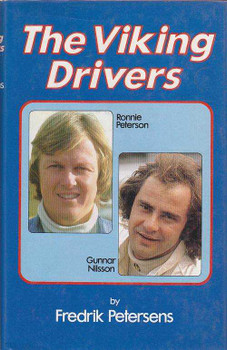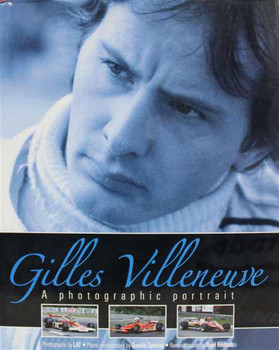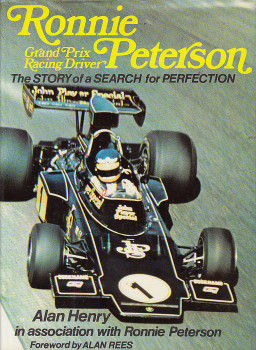Description
Authors: Quentin Spurring and Alan Henry, Hardbound, 240 Pages, ISBN: 9781844255481, H4548, First Published,
Ronnie Peterson was massively popular in his day and remains so with today's nostalgic fans who recall his proficiency and exuberance behind the wheel with such affection.
This book brings his career vividly to life through photos sourced from Lat, the world's largest library of Motor Racing Images.
The superb images in this book chart the career of a young man whose Formula 1 career statistics appear unremarkable. He started 123 Grands Prix over nine seasons, winning 10, with 14 pole positions and nine fastest laps. He was the runner-up in the World Championship in 1971 and 1978, but never won the title.
Yet here was truly a remarkable racing driver. Ronnie Peterson inspired a generation with his bravery, his absolute commitment, and his astonishing car control. He was universally acknowledged as the world's fastest driver through the 1970s, but he kept his modesty, his humour, his shyness and his simple charm. No wonder the fans adored him.
The car control came from kart racing. For many years now, every Formula 1 driver has set out on the road to stardom by racing karts. Ronnie was the very first to make it into Grand Prix racing via a podium in a karting World Championship, in 1966.
Soon after he had progressed to Formula 3, it reached an extraordinary zenith in 1969. That season was contested by a dozen future Grand Prix stars. Ronnie could beat them all. His epic victory at Monaco, in particular, marked him as a potential superstar.
He made it to Formula 1 the following season with March, and his performances in its Grand Prix and Formula 2 cars suggested that a World Championship was inevitable. Somehow, the title eluded him. Only in 1973 did he have the equipment that might have delivered it. He had a knack of being in the right team at the wrong time.
But he never lost his love of racing cars, of all kinds. He won sportscar races for Alfa Romeo and Ferrari, and touring car races for Ford and BMW, entertaining the spectators all the while.
Ronnie particularly loved racing on Italy's super-fast Autodromo Nazionale at Monza. This was the scene of one of his outstanding Formula 3 wins, his race-leading debut in Formula 2, and three of his Formula 1 victories. Ironically, it was also the scene of his final race. He died in hospital, aged 34, after receiving injuries in a startline crash that had not seemed life-threatening.
The motor racing community was left to mourn the loss of one of its greatest assets.





















